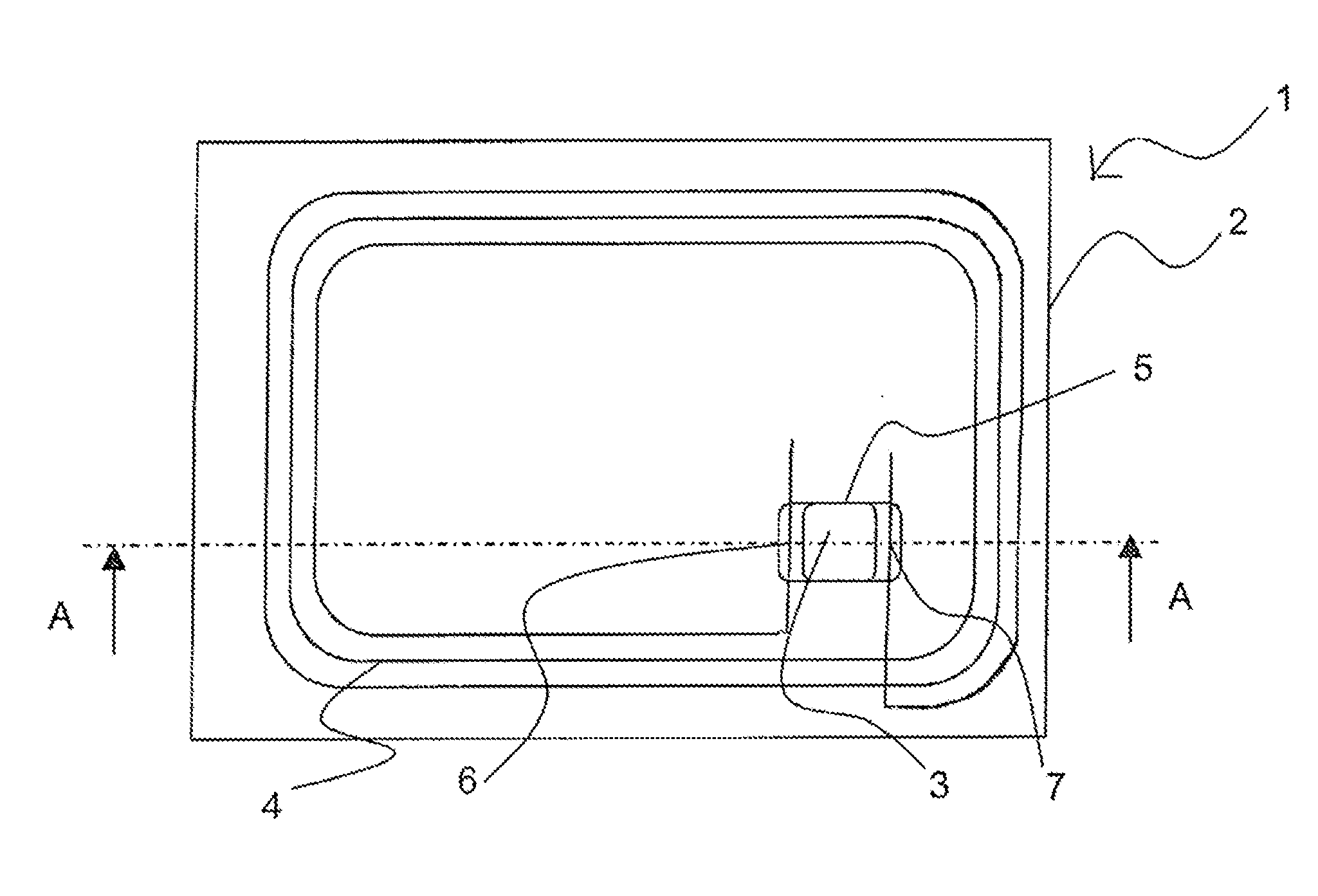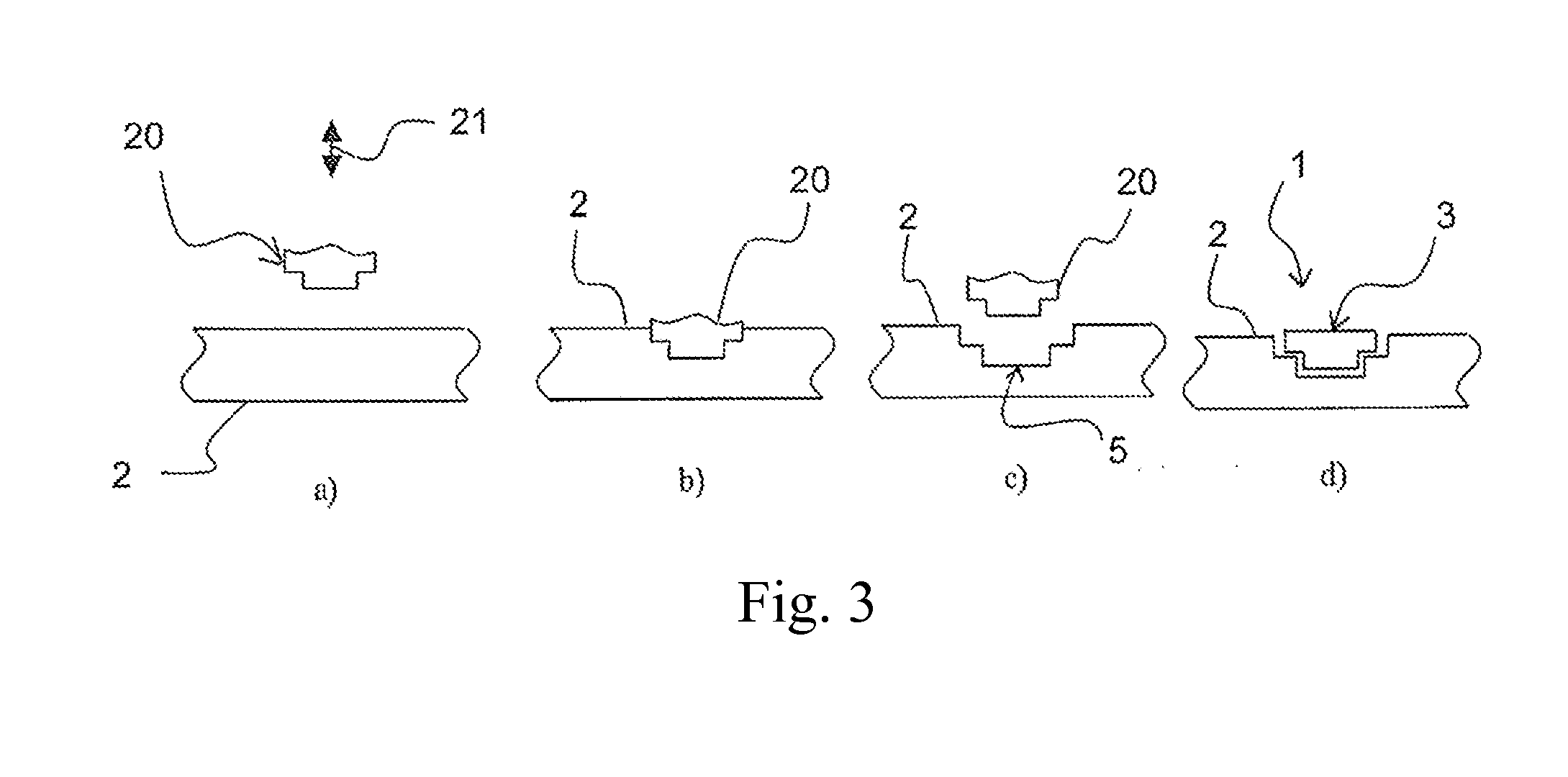Fibrous insert consisting of a single layer and equipped with a contactless communication electronic device
a technology of electronic devices and inserts, applied in instruments, other printing materials, and antennas, etc., can solve the problems of cavity bottom, difficult forgery by forgers, and inability to receive chips, etc., and achieve the effect of not increasing the thickness of the inser
- Summary
- Abstract
- Description
- Claims
- Application Information
AI Technical Summary
Benefits of technology
Problems solved by technology
Method used
Image
Examples
example 1
[0082]The fibrous support is fabricated on the paper machine so that the support comprises a fibrous base consisting of approximately 15% dry weight relative to the finished paper of polyamide synthetic fibres, approximately 6 mm long and approximately 1.7 dtex in diameter, and approximately 56% cellulosic fibres. The cellulosic fibres consist of 80% by number of long fibres (obtained from hardwoods) and 20% by number of short fibres (obtained from softwoods).
[0083]The support also comprises approximately 13% by weight relative to the finished paper of at least one mineral filler, introduced either at the refining stage, or later in a mixer. The mineral filler is, for example, kaolin.
[0084]The fibrous base after formation as a sheet is surfaced on the paper machine by a “size press” system. The “size press” bath contains a binder, for example polyvinyl alcohol, with a content of 4% by dry weight relative to the bath, a softening agent, for example glycerin, with a content of 15% by ...
example 2
[0090]The fibrous support has the same formulation as in Example 1, apart from the absence of fillers in the mass and a modification of the “size press” bath which contains a coating binder, for example PVA with a content of 4% by dry weight relative to the bath, a softening agent, for example glycerin with a content of 15% by dry weight relative to the bath and an acrylic-based surface bonding product with a content of 4% by commercial weight relative to the bath.
[0091]The flexibility of the fibrous support that is obtained is a little lower than in the preceding example because of the absence of fillers but the resistance to forgery by peeling and the cohesion of the support are enhanced because the internal cohesion is higher.
example 3
[0092]The fibrous support has the same formulation as in Example 1, apart from the “size press” bath which is replaced by an impregnating bath comprising only a flexible latex as binder, for example an acrylic styrene latex with a Tg equal to 5° C., which gives the support both flexibility and cohesion.
PUM
| Property | Measurement | Unit |
|---|---|---|
| Temperature | aaaaa | aaaaa |
| Temperature | aaaaa | aaaaa |
| Fraction | aaaaa | aaaaa |
Abstract
Description
Claims
Application Information
 Login to View More
Login to View More - R&D
- Intellectual Property
- Life Sciences
- Materials
- Tech Scout
- Unparalleled Data Quality
- Higher Quality Content
- 60% Fewer Hallucinations
Browse by: Latest US Patents, China's latest patents, Technical Efficacy Thesaurus, Application Domain, Technology Topic, Popular Technical Reports.
© 2025 PatSnap. All rights reserved.Legal|Privacy policy|Modern Slavery Act Transparency Statement|Sitemap|About US| Contact US: help@patsnap.com



